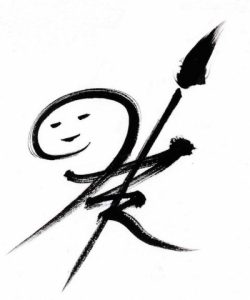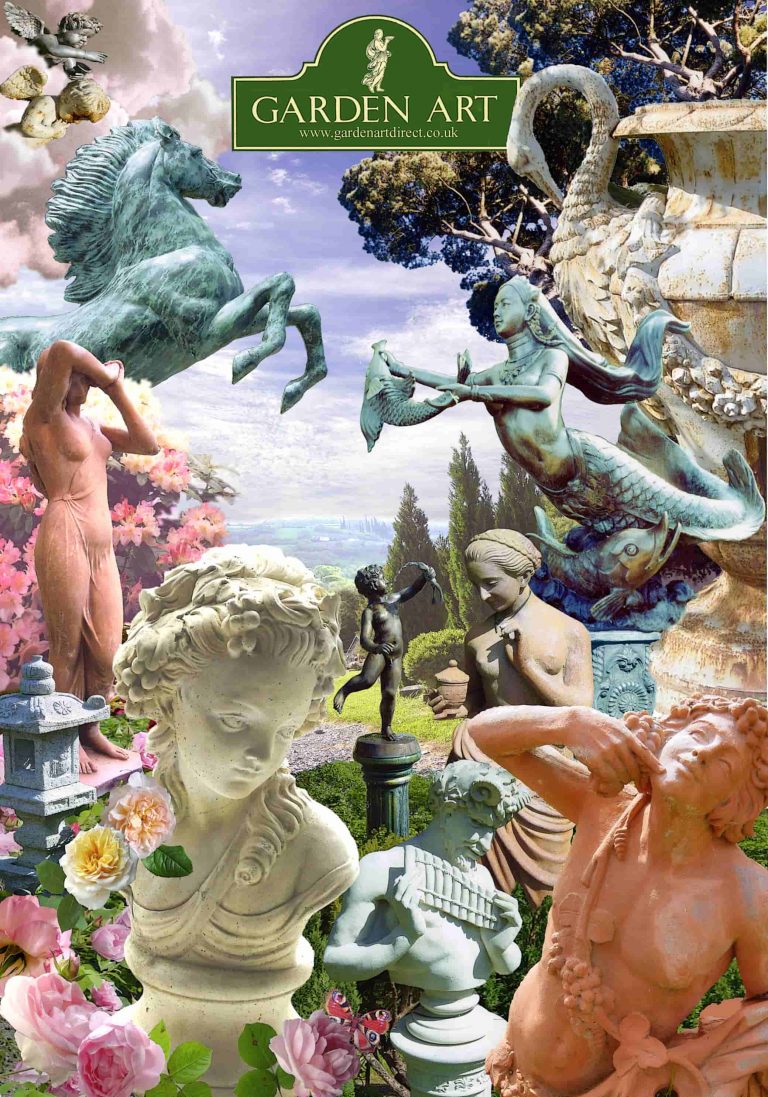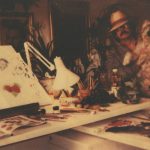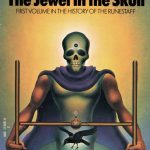
Bob Haberfield’s Metamorphic Signatures.
When I first got to know my father I was just 11 years old. He had returned to England after spending a few years back in his home country Australia..
I remember vividly the first time he showed me his portfolio, at the time I didn’t know he was an artist. The image that jumped out at me was his Cointreau Orange on ice, at first I thought it was a photograph the orange looked so realistic. To say I was impressed was an understatement.
I had always enjoyed art at school but never thought I was very good. Seeing my Fathers work gave me hope that one day I would be able to draw and paint as well as he could. Sadly that dream never materialised and not for lack of trying.
Another thing that caught my attention and imagination was his business card which had a small hand drawn monogram on it, he also used it to sign his drawings and paintings. At first glance it looks a bit like a bird holding a paintbrush. But on closer inspection you see it’s his initials R H. The monogram was inspired by his 2 budgies, Billy and Betty. He used to let them out of their cages and they would fly around his studio while he was painting, listening to classical music. He would often talk to them as they flittered about his studio.

For a brief spell in the 80’s he started using the name Rupert Kyle as one of his signatures for his paintings. I’m not sure where the name came from, or why he even decided to use a different name for his own paintings. I suspect that it was an effort to distinguish between the person who created the commercial art and the person who created the fine art.

As a young artist he had studied under the Australian Artist Clifton Pugh. Who had berated him for working as a commercial artist. He also became good friends with Paul Simms and Usher Belough and saw first hand how hard they worked to sell them selves and “get in” with the right people to promote their art, something that Bob had no desire for.
After a very promising start in the fine art world where many people eagerly anticipated his rise. He dropped out left Australia and fell back into commercial art. Somewhat Ironically Bob enjoyed the freedom it gave him, he was allowed to paint what he wanted for the book covers and record covers he did, where as in the art world he felt like he had to paint what people would buy. One of the comments so many people make about Bobs book covers is that they more often than not have absolutely nothing to do with the books story. Yet he was continually asked to do more, because of the impact his images had.
I think a part of him deep down Bob always wondered what he could have achieved if he had perused his fine art career and perhaps also a part of him felt that his commercial work would always be frowned on by the art world, so maybe this is why he invented Rupert Kyle. What ever his reasons it didn’t last long
. I think he grew happy with the idea that the art works that he did that where not commissioned for commercial use, where for him self, for his own enjoyment. He had no desire to show them or sell them. He made good money from his commercial art and saw his work in every big supermarket or book store he walked into.
With time his monogram signature evolved and simplified into a simple R holding a brush.
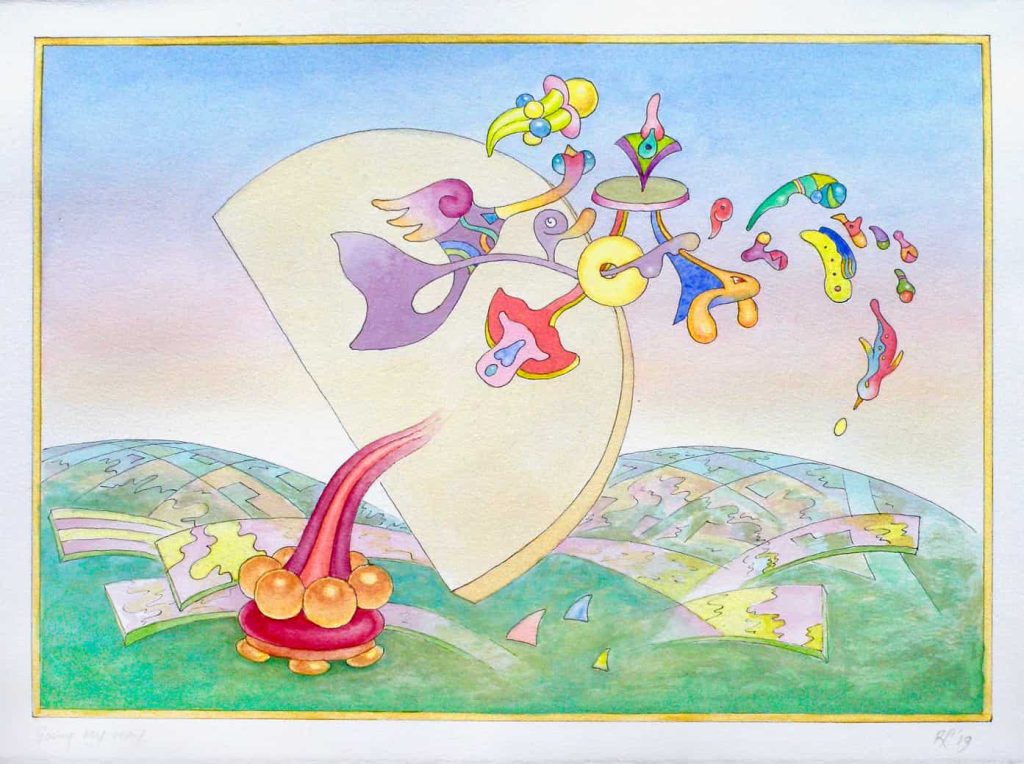
However he was quite whimsical with his signatures, sometimes he wouldn’t even bother to sign them at all, sometimes he would simply date them. I guess the act of putting your signature on your art has a certain amount of ego attached to it, to claim ownership of the image. Something my Father spoke to me about on many occasions, the desire to control one’s ego to not let it take control.
This I think is the root of the conflict that Bob saw with his creativity and his spirituality. The creative side of him wanted to excel and be the master where as his spirituality wanted to be humble.
one of his last projects that he worked on was to catalogue his artwork, it was a project that at 81 years old, took him a long time and caused him a lot of frustration, finding all the artwork measuring it and recording the date and title and marking down the location of the image and do it all in chronological order. He catalogued about 700 images, which i thought was his entire collection. I soon learned however that it was just his selection of artwork from a collection of what turned out to be over 3000 pieces.
I wasn’t entirely sure why he was so concerned about completing the catalogue when it was causing him so much stress, and why it was so important to him that i understood how his cataloguing system worked. My obvious deduction was that he wanted his legacy to be preserved which i thought was a bit odd considering he was never interested in showing his work while he was alive so why now? it went against his buddhist beliefs in impermanence.
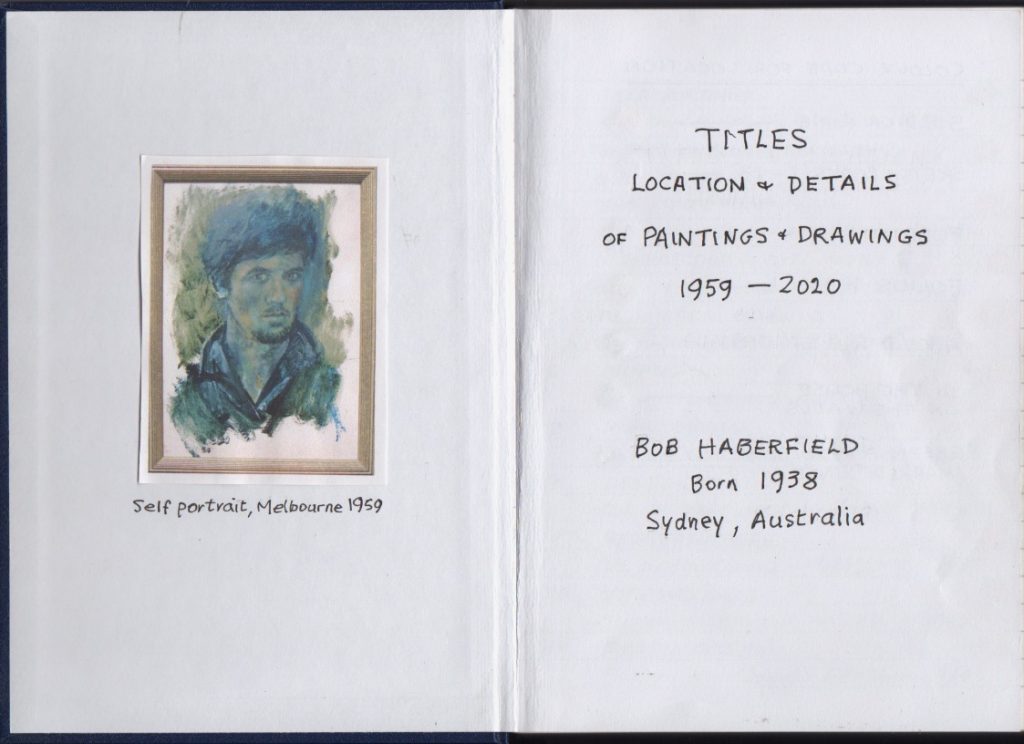
After he died and i went to his home to clear his things and retrieve his work I realised the sheer quantity of the work and in turn the full extent of his creative passion. My first reaction was what am i going to do with all this art work? I don’t have enough walls to put it all on.
So I set about finding ways to preserve his legacy so that it wouldn’t continue sit in draws in the darkness as it had for so many years.
it wasn’t until some time later that i understood my fathers motivation to go through all the pain staking hours to put the catalogue together. I was speaking to a close friend of his who he had known since the early days in the Buddhist commune. He said to me that Bob had done all that because he knew I would want to preserve his legacy. Which is exactly what I’m trying to do and With out the work bob had done i would never have known where to start.

